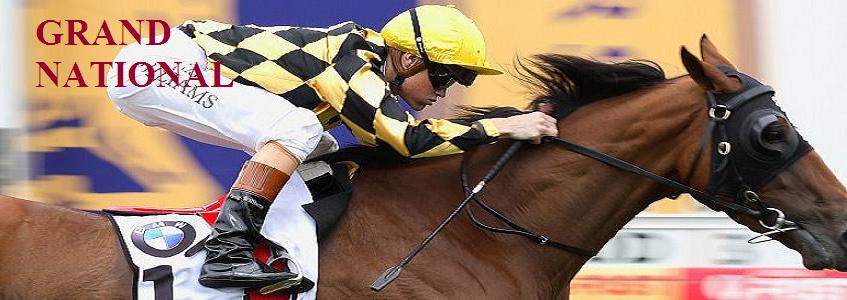Each of the 16 fences on the course are jumped twice, with the exception of The Chair and the Water Jump, which are jumped on the first circuit only.
 The Start
The Start There is a hazard to overcome even before the race starts - the build up, parade and re-girthing prior to the off lasts for around 25 minutes, over double the time it takes for any other race.
With 40 starters, riders naturally want a good sight of the first fence and after the long build-up their nerves are stretched to breaking point, which means the stewards' pre-race warning to go steady is often totally ignored.
Becher's Brook: Although the fence looks innocuous from the take-off side, the steep drop on the landing side, together with a left-hand turn on landing, combine to make this the most thrilling and famous fence in the horse racing world. The fence actually measures 6 ft 9 in on the landing side, a drop of 2 ft from take off.
Becher's Brook earned its name when a top jockey, Captain Martin Becher, took shelter in the brook after being unseated. "Water tastes disgusting without the benefits of whisky" he reflected.
The Chair: The final two jumps of the first circuit form the only pair negotiated just once - and they could not be more different. The Chair is both the tallest (5ft 3in) and broadest fence on the course, with a 6ft wide ditch on the take-off side.
Water Jump: This 2ft 9in fence brings the first circuit to an end and the sight of the runners jumping it at speed presents a terrific spectacle in front of the grandstands.
The Finish
The 494-yard long run in from the final fence to the finish is the longest in the country and has an acute elbow halfway up it that further drains the then almost empty stamina reserves of both horse and jockey.
For numerous riders over the years, this elongated run-in has proved mental and physical agony when the winning post seems to be retreating with every weary stride.
Don't count your money until the post is reached as with the rest of the Grand National course, the run-in can - and usually does - change fortunes.



